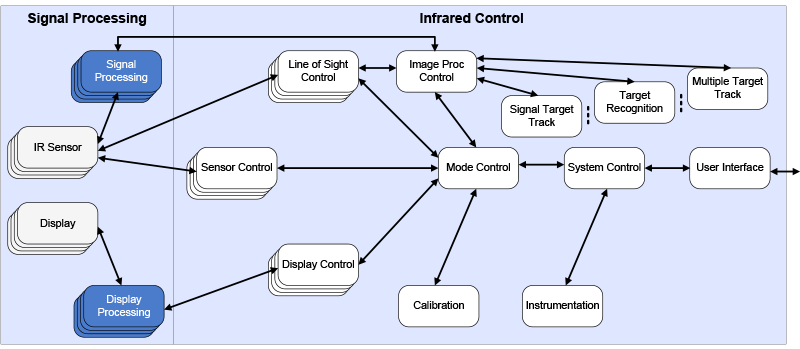
Modern-day processors for imaging, radar, and other sensors are complex systems each unique with diverse processing requirements per company, platform, sensor, and application. They might include multiple sensor arrays each steerable and requiring multiple processes to control, point, display, and perform the data processing for a variety of image processing applications such as detection, recognition, and single target track as well as tracking multiple targets in the operational area.
A common feature is that these systems require high bandwidth and high-performance signal processing. Such is now readily available with advances in FPGA capabilities as well as their programmability, the incorporation of embedded graphical processors, the increasing number of cores with vector units, and the high bandwidth of PCI Express and multi-Gigabit Ethernet.
Another common feature is that as the flexibility and power of these sensor systems have appreciated, so has the complexity of their software control. It is not uncommon for the architecture of embedded imaging and other sensor systems to have a framework of multiple software executables for the interface, data, and control processing.
For example, a passive infrared system in previous times might include a single monolithic imager that provided video from whatever was in front of where it was mounted. This simple technology-limited system didn’t require many sensors, line of sight (LOS), targeting, or display functionality to control the hardware or process the target information from past signal processing capabilities.

Included among the control processes are the user interface, system control, pointing and stabilization, sensor control, instrumentation, calibration, image display, mode control, single and multiple target tracking, etc. There might be multiple instances of some of these targeting processes depending on the application.
Some of the processing on the control side in today’s software-driven systems has increased with higher frame rates, reduced latencies, more complex algorithms, and additional functionality. Some of the control processing has not increased, but engineers are not inclined to combine these software processes to avoid system development complexity. High-speed interfaces, FPGA, graphic, and multi-core digital signal processors have advanced sensor signal processing capabilities. The question is what can be done for the control side of the sensor processing.
This white paper will discuss how modern-day processors can address the challenges of controlling today’s more complex sensor systems using an IR imaging system example.
Download the white paper to learn more.